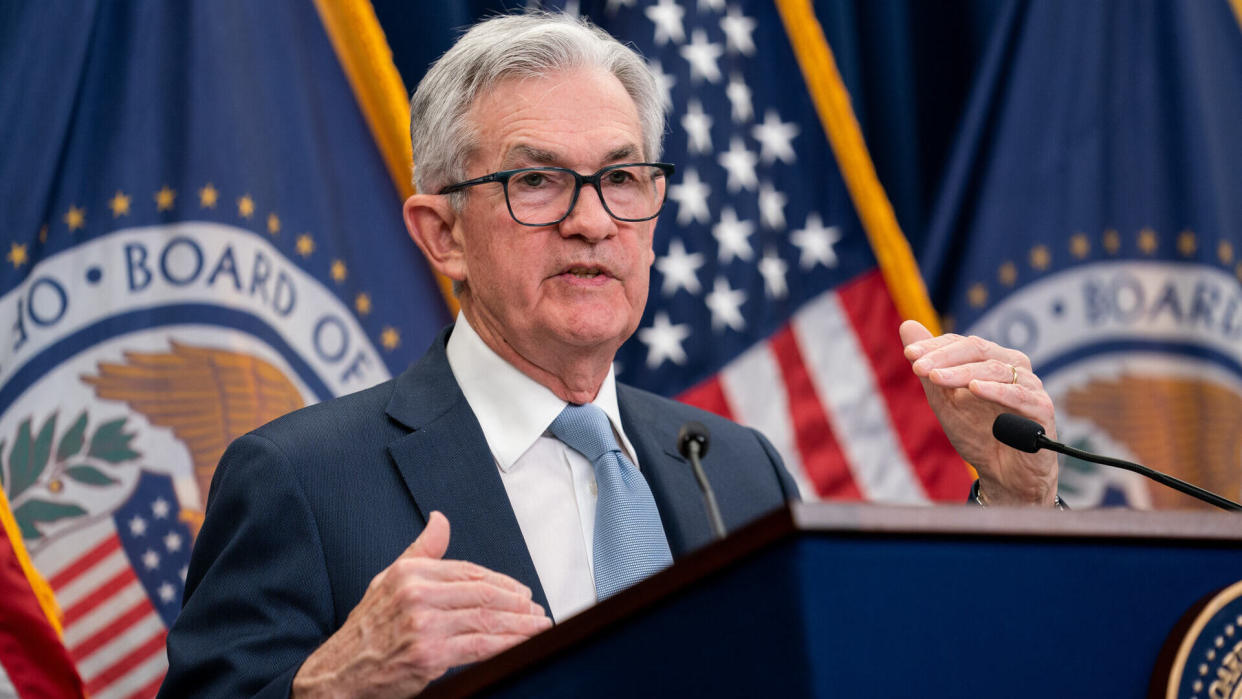Experts Say Lower Interest Rates Are Possible Later in 2023 Despite Fed Warnings

The Federal Reserve released the minutes of its Dec. 13-14 Federal Open Market Committee (FOMC) meeting on Jan. 4 — the last meeting of 2022 — stating that “participants generally noted that the uncertainty associated with their economic outlooks was high and that the risks to the inflation outlook remained tilted to the upside.”
Learn: Fed Raises Rates Half a Point To Wrap Up 2022, Warns Additional Increases Are Coming
Discover: How High Will Interest Rates Go in 2023?
No Fed participants anticipated “that it would be appropriate to begin reducing the federal funds rate target in 2023,” according to the minutes, in what is suggesting that there will be no drastic pivot in 2023.
Reiterating its hawkish stance, the Fed said that its restrictive policy stance would need to be maintained until the incoming data provided confidence that inflation was on a sustained downward path to 2%, “which was likely to take some time.”
“In view of the persistent and unacceptably high level of inflation, several participants commented that historical experience cautioned against prematurely loosening monetary policy,” according to the minutes.
Sylvia Jablonski, Defiance ETFs CEO and CIO said that the Fed minutes continue to make the market uncomfortable in that investors and markets continue to price in around a 5% terminal rate, with a reversal later in the year, but the Fed notes negate that forcefully.
“If the Fed keeps the hawkish stance, and doesn’t pause or end rate hikes beyond that expected level, the markets are likely to remain volatile and uncertain,” said Jablonski, adding that there is “some good news.”
“The Fed is data-dependent, and PMI [Purchasing Managers’ Index], margins, CPI [Consumer Price index] and other major economic indicators are starting to ease and may just be enough to temper the hawks, though that is unlikely to happen in the first half,” she said.
The Fed also gave a stern warning to the public, seemingly eroding any hope in a potentially softer stance, saying that “an unwarranted easing in financial conditions, especially if driven by a misperception by the public of the Committee’s reaction function, would complicate the Committee’s effort to restore price stability.”
“While inflationary pressures have begun easing in recent months, today’s Fed minutes point to rates remaining increased for (at least) the near future,” said Ben Vaske, investment research analyst at Orion Advisor Solutions. “Short-term decreases in CPI and PCE [Personal Consumption Expenditures] may have investors waiting for the Fed to shift from its aggressively hawkish action, but inflation is likely to remain above target levels while indicators like GDP [Gross Domestic Product] and wage growth continue to surprise on the upside.”
At the December meeting, in a move that was widely anticipated, the Fed Reserve unanimously raised interest rates by half a point for its last meeting of the year.
But while the moderation of the pace of rate increases was expected, investors and analysts were waiting for the Fed’s new projections, to get hints as to the direction of its policy in the new year. This latest, smallest hike followed four consecutive 75 bps hikes.
“We see tension between investors and policy makers about the path for rates in 2023: the markets expect fed funds to fall in the latter half of this year but policy makers expect rates to stay elevated,” said Jeffrey Roach, Chief Economist for LPL Financial. “FOMC members are making decisions “meeting by meeting” so as prices continue to ease, we expect the Fed to continue to downshift at their next meeting and hike by 0.25%.”
The Jan. 4 minutes also showed the discussions the participants had regarding risk-management considerations of their monetary policy, underscoring two risks.
On one hand, the risk that an insufficiently restrictive monetary policy could cause inflation to remain above the Fed’s target for longer than anticipated, which could lead to “unanchored inflation expectations and eroding the purchasing power of households, especially for those already facing difficulty making ends meet.”
On the other hand, they noted the risk that the lagged cumulative effect of policy tightening could end up being more restrictive than necessary, triggering a reduction in economic activity, “potentially placing the largest burdens on the most vulnerable groups of the population.”
“Participants generally indicated that upside risks to the inflation outlook remained a key factor shaping the outlook for policy. A couple of participants noted that risks to the inflation outlook were becoming more balanced,” according to the minutes. “Participants generally observed that maintaining a restrictive policy stance for a sustained period until inflation is clearly on a path toward 2% is appropriate from a risk-management perspective.”
Find Out: How To Prepare for a Layoff During a Recession
See: Is a Recession Coming in 2023?
The Fed isn’t giving much sign of a pivot and policymakers are increasingly worried about the strong labor market causing inflation, but the market doesn’t seem to be as concerned, said David Russell, Vice President of Market Intelligence at TradeStation.
“Regardless of what the Fed says, investors see reasons for optimism. Oil continues to sell off and today’s manufacturing report showed more deflationary pressures. We’re not to a pause or pivot yet, but the market sees more reason to expect it,” he added.
More From GOBankingRates
This article originally appeared on GOBankingRates.com: Experts Say Lower Interest Rates Are Possible Later in 2023 Despite Fed Warnings
